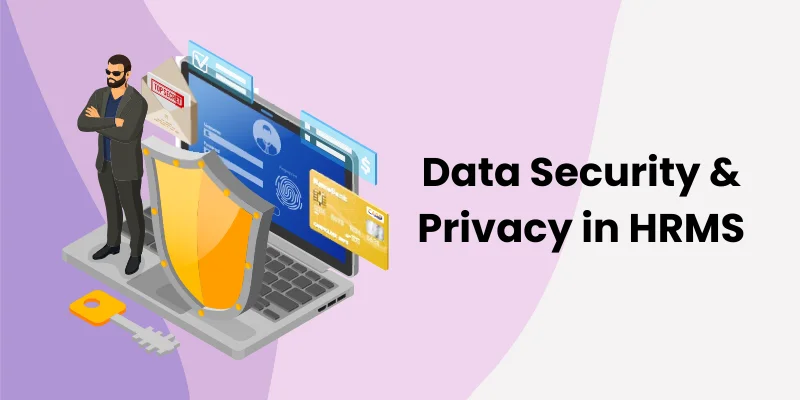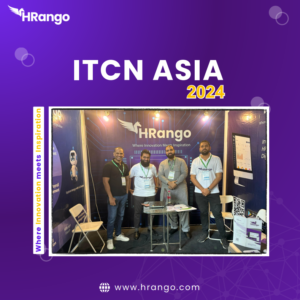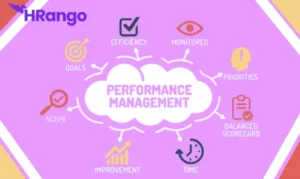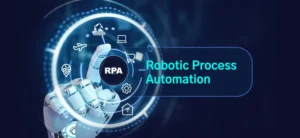In today’s digital age, the importance of data security and privacy cannot be overstated, especially within Human Resource Management Systems (HRMS). HRMS platforms store sensitive employee data, making them prime targets for cyberattacks. With the increasing prevalence of data breaches, ensuring robust security measures is vital for protecting both organizations and their employees. This article delves into the key considerations for data security and privacy in HRMS, using hRango for best practices in safeguarding HR data.
Understanding the Risks in HRMS
HRMS platforms store a wealth of sensitive information, including personal employee details, payroll data, performance records, and more. This data is invaluable for managing HR processes, but it also presents significant security risks. Common threats include phishing attacks, unauthorized access, data leaks, and insider threats. The impact of a data breach can be devastating, leading to financial losses, legal penalties, and damage to an organization’s reputation.
Legal and Regulatory Requirements
Compliance with data protection laws is a critical aspect of HRMS security. Regulations such as the General Data Protection Regulation (GDPR) and the California Consumer Privacy Act (CCPA) set stringent standards for data handling and privacy. HRMS platforms must adhere to these laws to avoid hefty fines and legal repercussions. hRango, for example, is designed with compliance in mind, offering features that help organizations meet global data protection standards. This includes tools for managing consent, handling data subject requests, and ensuring secure data processing.
Key Considerations for Data Security in HRMS
When it comes to securing HR data, there are several key considerations:
- Data Encryption and Secure Storage: Encrypting data both at rest and in transit is essential to prevent unauthorized access. hRango employs advanced encryption techniques to safeguard data, ensuring that even if data is intercepted, it remains unreadable to unauthorized parties.
- Access Control and User Authentication: Controlling who has access to sensitive data is crucial. Implementing role-based access control (RBAC) and multi-factor authentication (MFA) helps ensure that only authorized personnel can access specific information. Hrango provides robust access control features, allowing administrators to manage permissions effectively.
- Regular Security Audits and Monitoring: Continuous monitoring and regular security audits are necessary to identify and address vulnerabilities. hRango offers real-time threat detection and automated alerts to keep HR teams informed of any potential security issues.
The Role of hRango in Securing HR Data
hRango takes data security seriously, incorporating multiple layers of protection to secure HR data. It uses industry-standard encryption protocols, such as AES-256, to protect data both at rest and in transit. Additionally, hRango’s real-time threat detection and response mechanisms ensure that any suspicious activity is swiftly identified and addressed. The platform’s commitment to security is further demonstrated by its adherence to international security standards, making it a trusted choice for organizations worldwide.
Data Privacy in HRMS
Beyond security, data privacy is equally important. Employees have the right to know how their data is being used and to control access to it. HRMS platforms must ensure that they handle data in a way that respects employee privacy. This involves obtaining consent for data processing, managing data subject rights (such as the right to access or delete personal data), and using anonymization techniques where appropriate. hRango excels in this area by offering tools that allow HR teams to manage data privacy effectively, ensuring compliance with privacy laws, and fostering trust among employees.
Best Practices for HRMS Data Security
Organizations can further enhance HRMS data security by following best practices:
- Implementing Strong Password Policies: Encourage the use of complex, unique passwords for accessing HRMS platforms and mandate regular password updates.
- Multi-Factor Authentication (MFA): Adding an extra layer of security through MFA can significantly reduce the risk of unauthorized access.
- Regular Employee Training on Data Security: Educate employees on the importance of data security, how to recognize phishing attempts, and the best practices for safeguarding their credentials.
Data Security in HRMS During Integration
When integrating HRMS with other systems, data security is a primary concern. Data transfer between systems must be secure to prevent interception or loss. hRango facilitates secure integration through encrypted APIs and robust data transfer protocols, ensuring that data remains protected throughout the migration process.
Data Retention and Disposal Policies
Data retention policies define how long data should be kept and when it should be securely disposed of. These policies are crucial for minimizing the risk of unauthorized access to outdated or unnecessary data. hRango provides tools for managing the data lifecycle, ensuring that data is retained only as long as necessary and securely disposed of when no longer needed.
Addressing Insider Threats
Insider threats, whether intentional or accidental, can pose significant risks to HR data security. Identifying and mitigating these threats requires a combination of monitoring, training, and strict access controls. hRango helps organizations manage insider threats by logging all user activities, enabling HR teams to detect and respond to suspicious behavior promptly.
Incident Response and Data Breach Management
Having a solid incident response plan is essential for minimizing the damage caused by a data breach. The plan should outline the steps to take in the event of a breach, including notifying affected individuals and authorities, containing the breach, and restoring systems. hRango supports incident management by offering tools for rapid response and detailed reporting, helping organizations recover quickly from security incidents.
The Role of AI and Automation in HRMS Security
AI and automation are transforming HRMS security by enabling more proactive threat detection and response. Predictive analytics can identify potential security threats before they materialize, while automation streamlines security processes, reducing the likelihood of human error. hRango leverages AI to enhance its security features, providing organizations with a cutting-edge solution for protecting their HR data.
Continuous Improvement in Data Security
Data security is not a one-time effort but a continuous process. As cyber threats evolve, so too must the security measures used to protect against them. Regular updates, patching, and security assessments are vital for maintaining a secure HRMS environment. Hrango is committed to continuous improvement, regularly updating its platform to address emerging threats and enhance its security capabilities.
Future Trends in HRMS Data Security
The future of HRMS data security will likely be shaped by emerging technologies such as quantum computing and blockchain. Quantum computing has the potential to break traditional encryption methods, necessitating the development of quantum-resistant encryption. Meanwhile, blockchain technology could offer new ways to secure HR data through decentralized, tamper-proof records. hRango is at the forefront of these trends, exploring innovative solutions to ensure the long-term security of HR data.
Conclusion
In conclusion, data security and privacy are critical considerations for any organization using HRMS platforms. By choosing a secure and compliant HRMS like Hrango, organizations can protect their sensitive HR data from a wide range of threats. Implementing best practices and staying informed about future trends will further enhance data security, ensuring that HR teams can manage employee data with confidence and integrity.
FAQs
What makes hRango stand out in terms of data security?
hRango offers advanced encryption, real-time threat detection, and robust access controls, ensuring comprehensive protection of HR data.
How does hRango ensure compliance with global data protection laws?
hRango is designed to meet the requirements of major data protection laws like GDPR and CCPA, offering tools for consent management, data subject requests, and secure data processing.
What steps should organizations take to secure HRMS data?
Organizations should implement strong password policies, use multi-factor authentication, conduct regular security audits, and provide employee training on data security.
How can HR teams manage employee data privacy effectively?
HR teams can manage data privacy by obtaining consent, respecting data subject rights, and using anonymization techniques to minimize the exposure of personal data.
What future technologies will impact HRMS data security?
Emerging technologies such as quantum computing and blockchain are expected to influence HRMS data security, offering new challenges and opportunities for enhancing data protection.







